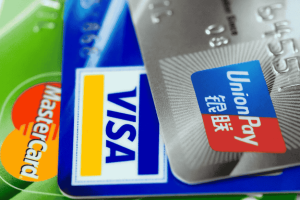Today, taking care of your financial health goes beyond simply monitoring expenses and saving money. Many customers are surprised by hidden bank fees that slowly chip away at their budgets without anyone noticing. Whether it’s about paying bills, investing, or just managing everyday finances, it is crucial to be aware of every detail. If you’ve ever wondered, “How can I avoid fees that aren’t clearly shown on my statements?”, then this article offers you a comprehensive guide to understanding, identifying, and dodging these unwanted costs.
Throughout the text, we break down the topic in an accessible and light-hearted way, with practical tips that can make all the difference for you—the reader from the Philippines, Singapore, Malaysia, Papua New Guinea, Vietnam, Thailand, or Indonesia. Our goal is to make the banking world more transparent while empowering you to make smarter financial decisions. Let’s uncover together all the secrets behind hidden fees!
What Are Hidden Bank Fees?

Understanding the Concept
Hidden bank fees are charges that aren’t always clearly stated at the time you sign up for a financial service. Unlike advertised rates, these hidden costs may appear buried within complex contract language or be automatically applied to routine transactions. They can range from account maintenance fees and withdrawal charges to extra costs for services that seem free at first glance.
This practice can lead to unpleasant surprises, especially if the customer is not attentive to the fine print in each bank product. The trick is to read the small print carefully and, if possible, compare offers among different institutions. After all, in a global environment where innovation and competitiveness among banks are rising, consumers have more power and alternatives to protect themselves.
Some fees might be justified as investments in technology and security, but often they simply represent an opportunity for banks to increase their profit margins. Have you ever encountered an unexpected charge on your bill? If so, don’t worry—below, we explain how to identify these costs and avoid surprises.
Main Types of Hidden Fees
Top 5 Charges You Need to Know
To make it easier to understand, here are the main hidden bank fees that can impact your budget:
- Account Maintenance Fee:
A monthly or annual charge that can go unnoticed, especially if the customer uses few services during the period.
- Transfer and Withdrawal Fee:
Transactions that, although simple, may incur extra costs in electronic transfers, ATM withdrawals, or interbank transfers. - Currency Conversion Fee:
For customers who travel or conduct international transactions, these fees can be particularly burdensome, affecting the final converted amount. - Inactivity Fee:
Some institutions charge when the account has no transactions for a certain period. - Extra Service Fees:
Charges for items such as checkbook issuance, paper statement mailing, or access to premium services may include hidden costs that aren’t immediately obvious.
Comparison Table of Hidden Fees:
| Fee Type | What It Is | Potential Impact |
| Account Maintenance Fee | Monthly/annual charge to keep the account active | Can slowly erode your budget |
| Transfer and Withdrawal Fee | Charges for transactions and ATM withdrawals | Variable costs depending on usage |
| Currency Conversion Fee | Fee applied to international transactions | Reduces the final converted value |
| Inactivity Fee | Charge for no account activity over a set period | Penalizes less active customers |
| Extra Service Fees | Charges associated with non-essential services | Can accumulate over time |
These costs are often concealed in contracts and statements, causing you to only notice them at the end of the month. However, once identified, they become controllable and avoidable.
How to Identify Hidden Fees in Your Contract

Practical Tips to Decipher the Fine Print
Reading the fine print may seem tedious, but it is a crucial step to avoid unpleasant surprises. Here are some strategies that can help:
- Read the Contract Carefully:
Spend time going through all the clauses and look out for terms indicating automatic charges or extra costs. If something is unclear, contact customer service and ask for clarification. - Research and Compare:
Check the conditions offered by different banks and compare how each one structures their fees. Many institutions provide this information transparently on their websites. - Use Digital Tools:
There are apps and websites that help simulate and monitor banking costs. These tools can alert you to fees you weren’t even aware of, giving you better control over your finances. - Talk to Other Customers:
Getting involved in online forums or groups allows you to exchange experiences with other users, who may reveal common hidden fees in certain institutions. - Review Statements and Documents:
Carefully analyze your bank statements for recurring charges that you don’t recognize. This could be a clear sign of a hidden fee that has slipped by unnoticed.
Tip: Create a checklist of key points to verify in the contract, including maintenance fees, transaction charges, and any additional costs. This way, you’ll have a handy guide for future reviews.
Strategies to Avoid Hidden Fees
How to Protect Your Wallet from Unpleasant Surprises
Now that you know how to identify hidden fees, here are some strategies to avoid them and lower extra costs:
1. Choose the Right Institution
- Look for banks that are transparent about their fees and offer accounts with low or no charges.
- Adopt a critical approach and always question any ambiguous information.
2. Negotiate Your Terms
- In some cases, it is possible to negotiate with your bank manager to reduce or eliminate certain fees, especially if you are a long-standing customer.
- Ask if there are special conditions for customers who use few services or maintain a minimum balance.
3. Use Digital Services
- Prioritize digital banks, which often offer more competitive fees and less bureaucracy.
- Modern apps come with features like alerts and real-time monitoring, helping avoid surprises.
4. Monitor Your Finances
- Use spreadsheets or finance apps to track your expenses and identify any unexpected charges.
- Regularly review your statements and bank communications to stay updated.
5. Stay Informed About Your Options
- The financial market is constantly evolving. Stay alert to new alternatives and promotions offered by innovative institutions.
- Explore courses, webinars, and articles on financial education to enhance your knowledge and decision-making ability.
Frequently Asked Questions (FAQ)
Addressing the Most Common Doubts
1. What exactly are hidden fees?
Hidden fees are charges that do not appear clearly when you sign up for services; they are often buried in contractual clauses or statements. These may include maintenance fees, transaction costs, and other charges that aren’t clearly disclosed upfront.
2. How can I identify these fees in my bank contract?
The best approach is to read the fine print carefully, research the bank, and compare different offers. Digital tools and discussions with other customers can also help you spot unexpected charges.
3. Is it possible to negotiate the removal of these fees?
Yes, in some cases it is possible to negotiate directly with your bank manager—especially if you have a long-standing relationship or use minimal services.
4. Which banks typically have the lowest hidden fees?
Digital banks often offer lower fees and more transparent policies. However, it’s essential to do your research and compare, as even among digital institutions there can be differences.
5. What should I do if I find a fee I don’t recognize?
Contact customer service immediately to understand the charge. If necessary, file a formal complaint and, if the issue persists, seek advice from consumer protection agencies.
Conclusion

Avoiding hidden bank fees is an essential step in taking control of your finances and ensuring your money is used in the most effective way. By understanding what these fees are, learning how to identify them, and implementing strategies to avoid them, you empower yourself to make informed choices and turn negative surprises into opportunities for saving.
Regularly review your contract terms, use available tools, and share your questions with professionals and fellow customers. Remember: financial education is the key to a more prosperous future. Now that you have these tips, it’s time to look at your statement with a critical eye and transform the way you manage your money.
So, are you ready to protect your wallet from hidden fees? Leave a comment, share this article with friends, and keep educating yourself to make the best financial decisions!









